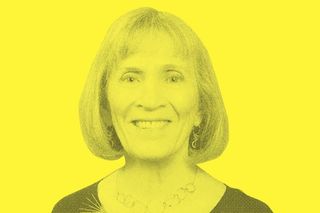
Claudia Goldin Wins Nobel Prize in Economics For Her Work on Women’s Pay
Claudia Goldin, a Harvard University professor, was awarded the 2023 Nobel economics prize for “having advanced our understanding of women’s labor market outcomes.”

Claudia Goldin, a Harvard University professor, was awarded the 2023 Nobel economics prize for “having advanced our understanding of women’s labor market outcomes.” Goldin’s research was the “first comprehensive account” of women’s participation in the labor force which helped explain the gender gap in employment and pay; that is, why women are likely to work less, and earn less, than men.
Goldin is only the third woman to win this prize – Elinor Ostrom won it in 2009 and Esther Duflo in 2019. While announcing the recipient of this year’s award, the Royal Swedish Academy of Science said, “The fact that women’s choices have often been, and remain, limited by marriage and responsibility for the home and family is at the heart of her analyses and explanatory models… Her insights reach far outside the borders of the US and similar patterns have been observed in many other countries. Her research brings us a better understanding of the labour markets of yesterday, today and tomorrow.”
Only around 50% of women work or even seek work to earn, as compared to 80% men, the committee awarding the prize noted. These participation gaps between men and women vary across the world and have been found to be wider in South Asia, the Middle East, and North Africa, sometimes exceeding 50%. This gap is often viewed by economists as a “wasted opportunity,” reported Associated Press (AP), as it reveals an inefficient allocation of work, where jobs aren’t going to those most qualified to hold them, which may pose large economic costs to society.
Over the last century, more women have entered the workforce, especially in high-income countries. “Equal participation does not, however, imply gender equality, as gender gaps exist in many other dimensions of the labor market,” the committee noted. Herein enters the gender pay gap – when women work, they earn around 13% less than men. The jobs they take up often have less scope for promotion and the skewed male to female ratio in boardrooms and higher positions shows the continued underrepresentation of women. The committee noted that increasing women’s participation and bridging the gender wage gap is also a matter of economic concern, as it could help increase global GDP.
Goldin set out to study the reasons behind these gaps, painstakingly reviewing over 200 years of labor market data, and she found that women’s jobs were often left out from the historical records. Women working on farms or in cottage industries, for instance, were not included in the records, while women’s occupation in the US censuses was often listed as “wife.”
Earlier, the understanding was that as economies grow, more women would enter the workforce. However, Goldin’s research revealed this was not the case during the Industrial Revolution. “Goldin showed that female participation in the labour market did not have an upward trend over this entire period, but instead forms a U-shaped curve. The participation of married women decreased with the transition from an agrarian to an industrial society in the early nineteenth century, but then started to increase with the growth of the service sector in the early twentieth century. Goldin explained this pattern as the result of structural change and evolving social norms regarding women’s responsibilities for home and family,” the committee noted.
In an earlier interview with AP, Goldin said, “…we realize that these differences, although some are found within the labor market, are really reflections of what happens within individuals’ homes, and they’re an interaction between what happens in the home and what happens in the labor market.” Women’s own expectations about work prospects and participation at the time – which, the committee noted, could be “severely off the mark” – may have had a role to play in their reduced participation.
Women, as young girls, watched their mothers at home and expected the same for themselves. They may have, therefore, stopped their education at a point as they didn’t expect long working careers for themselves. However, those women who came of age in the 1970s and 80s did see themselves working for a significant portion of their lives and thus invested in higher education, Goldin’s research explained.
Another factor that could have led to an increase in women’s participation around the 1960s was the invention of the contraceptive pill. This pill gave women control over their fertility and allowed them to delay marriage to instead invest in their education and careers.
While more women are part of the labor force today, the gender pay gap continues to persist. Goldin showed that parenthood could be behind these wage disparities. “Once a woman has a child, her pay tends to drop and subsequently doesn’t grow as fast as it does for men, even among women and men with similar educational and professional backgrounds,” AP reported. Women, as mothers, bear a higher burden of childcare responsibilities than their male partners. However, modern work demands flexibility, availability and rewards uninterrupted careers. As a result, new mothers who take time away from work to tend to their children, and subsequently return to work require greater flexibility in terms of hours and responsibilities, which affects their earnings.
According to the awarding committee, Goldin’s work, which combines history and economics, serves one crucial lesson: “…there are many, often not mutually exclusive, explanations of labor market gender gaps (e.g., discrimination, human capital inequalities, social norms, childcare expectations, technological change, labor market structures), and these explanations change as a society transitions from one stage of development to another.” Goldin’s research further served to establish the economics of gender as a mainstream area of economic research. But it also shows that addressing the gender employment and wage gap is a complicated policy question, due to its intersections with societal expectations and norms which are context-dependent and vary from country to country.
As Randi Hjalmarsson, a member of the economic prize committee, said, “Claudia Goldin’s discoveries have vast societal implications… By finally understanding the problem and calling it by the right name, we will be able to pave a better route forward.”
Ananya Singh is a Senior Staff Writer at TheSwaddle. She has previously worked as a journalist, researcher and copy editor. Her work explores the intersection of environment, gender and health, with a focus on social and climate justice.
Related


The Bihar Caste Census Affirms Need for Increasing Caste‑Based Reservations
